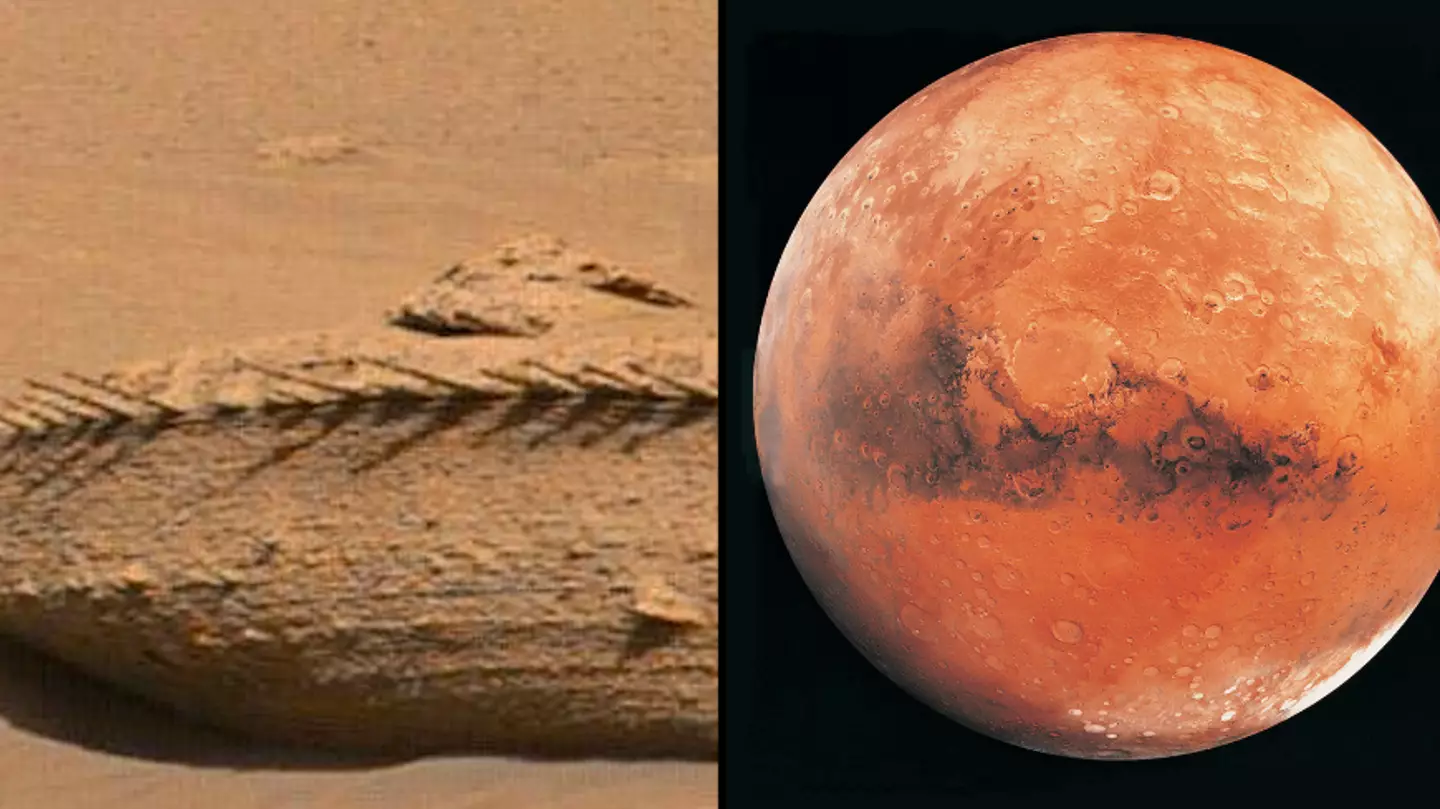
Scientists say an alien spaceship crash landing onto Mars can't be ruled out as the cause of strange spikey protrusions found on the planet.
Quick, somebody call Mulder and Scully.
In April, Nasa’s Curiosity Rover photographed what appear to be rows of spikes, plates and wedges protruding from rocks on the bottom of the 154km-long Gale Crater.

Advert
Astrobiologist Dr Nathalie Cabrol, of the NASA Ames Research Centre and Search for Extraterrestrial Intelligence (SETI) Institute, has been studying Mars for over 20 years and says this is the 'most bizarre' rock she's ever encountered.
A new paper published in the Journal of Astrobiology concludes that the formations might be 'sand spikes', researchers also say 'a fragment from an extraterrestrial or terrestrial spacecraft cannot be discounted with absolute certainty'.
The scientists say there also appear to be wheels, an axle and a debris field alongside the spikes.
Sand spikes form in water-logged sands during massive earthquakes.
Similar spikes to the ones photographed on Mars have been found at the north Alpine basin of south Germany and at Mount Signal in the Imperial Valley of southern California.
Advert
“There is no way of proving for certain what the spikes are but the balance of the evidence would suggest ‘sand spikes’ resulting from seismic activity on Mars," Prof Richard Armstrong, of Aston University, Birmingham told The Telegraph.
“I suspect the enigmatic ‘wheels’ are a separate phenomenon.
"Mars images often show strange formations and features which ‘look like’ familiar objects.
Advert
“Any debris field on Mars would certainly suffer erosion over time, especially from wind.”
The authors also haven't ruled out that the spikes might be a result of human activity.
"Given that possibly 10 or more craft have crashed upon the surface, coupled with the jettison of equipment associated with landing the rovers, it is possible the spikes and its substrate are human-made and consist of debris that fell onto the surface of Gale Crater," they write in the paper.
“Nevertheless, no debris field is evident and no evidence of any additional debris that may have originated on Earth.
“Given its small size and that there are no known human-made analogs and no logical explanation as to what purpose these spikes may serve, it does not seem likely these specimens are the remnants of craft or equipment that fell into Gale Crater.
Advert
"One can only speculate about extraterrestrial origin."
Topics: News, World News, Space
